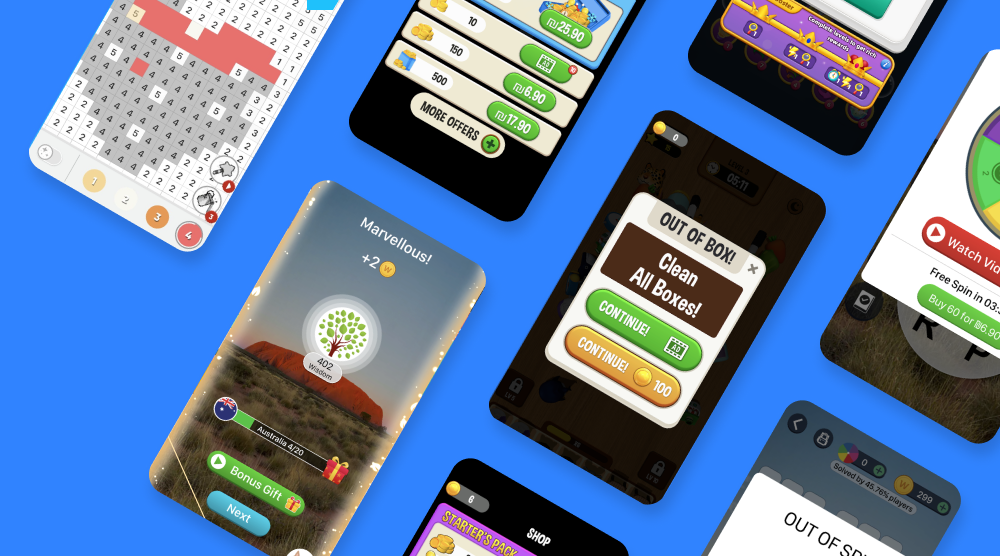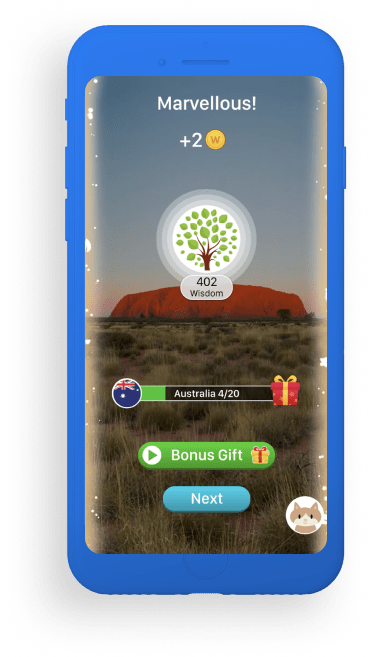According to data.ai, puzzle games have now racked up over 3 billion mobile game downloads and are the 5th largest genre in the mobile gaming space. Not to mention, they grow at a rate of 15% every year.
This is for good reason - puzzle games appeal to a wide range of gamers because they’re relatively simple. Puzzle gamers get to test their problem-solving skills with short challenges they can easily play over and over again (think: solitaire, sudoku, hex puzzles, and more).
Puzzle games are so straightforward that they tend to have a single currency. If a player wants to purchase anything in the game, they can’t rely on harder currency like rubies or gems - they just need soft currency like coins, and a lot of it. And that’s why ad placements offering extra currency are so valuable. In fact, according to Google, 73% of mobile puzzle players believe that ads have no effect, or even a positive effect, on their gameplay experience.
To make sure you’re setting up your puzzle game’s placement strategy for success, Anna Popereko, Game Design Consultant at ironSource, walks through the most useful rewarded video placements and what makes them so effective. Let’s get started.
1. Reward multipliers
The most popular rewarded video placement in puzzle games is a reward multiplier. It works like this: once players receive a reward (e.g. after completing a level), the next screen offers the chance to multiply the reward they just got - simply by watching a rewarded video. The amount may depend on the game, but you can offer anything from 2x to 20x the reward.
This placement works for a few reasons. First, it allows players to easily capitalize on and exponentially increase the currency they just won. Second, these placements also create a sense of urgency - they have only one chance to engage, so if the user chooses to skip this page, they miss out on a major opportunity to boost their currency.
Playsimple, for example, used this approach in their game Word Trip. Once users receive a reward, they simultaneously get the option to multiply it - all they need to do is watch a rewarded video.
2. Extra currency
Extra currency is another strategic placement, and it has a similar purpose to reward multipliers: increasing currency. But instead of popping up, these placements sit on the home page or the shop, waiting to be engaged with. Unlike reward multipliers, you don’t need to be actively playing the game to access extra currency placement - in fact, many players just stumble upon them.
These placements don’t offer unlimited currency - they’re paced and capped so players can usually only engage with them once or twice a day. Extra currency placements also use timing to their advantage - they’re usually accompanied by a countdown clock, letting the player know how much time is left until they can watch a new video and access another reward.
For example, Lihuhu worked this placement into their hit Match Triple 3D: while players explore currency bundles in the shop, they can watch a rewarded video to get 10 coins free of charge. Players in the shop are already motivated to get more currency, so this kind of placement works well.
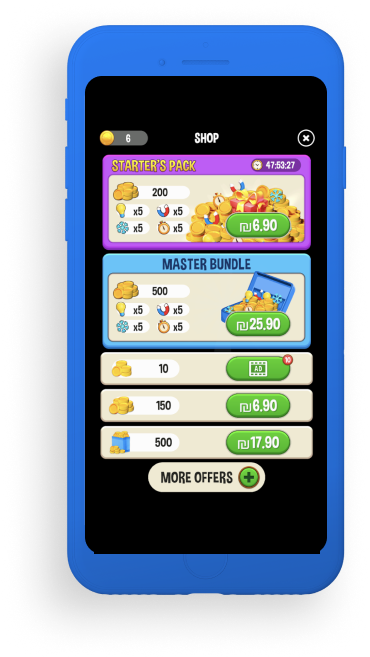
3. Revival
Puzzle games tend to have pretty long levels, often several minutes - so revival is another critical placement. Usually, if a player fails in the middle of the level, they’d have to give up all the time they’ve invested in the level and start over. But with revival placements, they just watch a rewarded video and continue from the moment they left off.
Players are naturally motivated to engage with revival placements - especially when the other option is losing their hard work and time spent progressing in the level. Generally, the longer the level, the more players are open to engaging with this placement.
Lihuhu successfully uses this placement in Match Triple 3D - when players run out of lives, there are only two ways to continue playing: spend their currency, or watching a rewarded video. This placement is very effective because it catches players in a critical spot, where the rewarded video is literally life-saving.
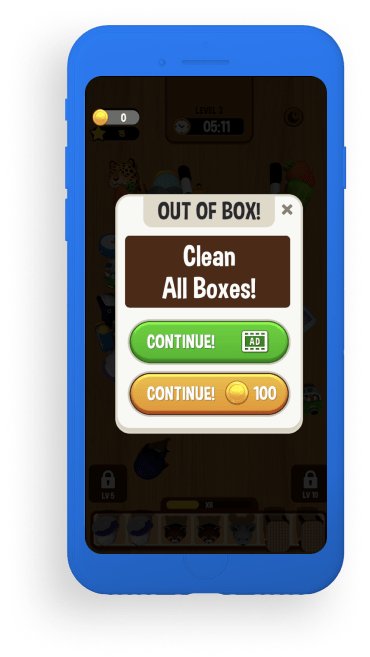
4. Booster
Puzzle games attract players who are motivated by mental challenges, and being able to solve any problem that comes their way. That’s why booster placements are popular. When a player gets stuck at any point in the level, they can just watch a rewarded video, get some assistance in solving the current challenge, then confidently move on to their next challenge.
The booster shouldn’t solve the entire puzzle for players - doing that would take away from the sense of achievement players get from solving challenges themselves. Rather, the booster should offer just the right push to keep the player engaged in the game, and hopefully able to solve the puzzle themselves.
In Pixel by Number, Wido Games’ color by numbers game, when players get tired of tapping on a group of numbers, they can just click on the paint can icon, watch a rewarded video, and get that area colored in for them. It’s a win-win - with the booster, the player gets the extra help and motivation they need to complete the puzzle.
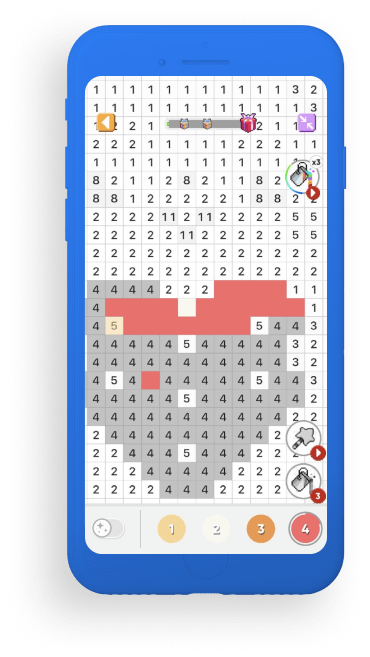
5. Extra life and mystery rewards
Two other common and worthwhile placements to use are extra life and chests. In games with a life-based system, once gamers run out of lives, they have to wait to get a refill - so this can be an ideal spot for a rewarded video placement. By engaging with the extra life placement, players gain another lifeline and the boost of energy they need, simply by watching a rewarded video. These placements are an ideal way to motivate players to keep going, especially if they're burning through multiple lives in one sitting - not to mention, they increase session length.
Mystery rewards, on the other hand, offer a nice and exciting alternative to extra currency placements. Once the player opens the mystery placement (e.g. a chest), they’ll get to spin a wheel with a mystery prize. Like extra currency placements, these are time-limited with a countdown clock, and pacing depends on the game.
In Word Trip by Playsimple, for example, onceplayers engage with the mystery reward, they can watch a rewarded video to spin for their prize - but they only get a certain amount per day.
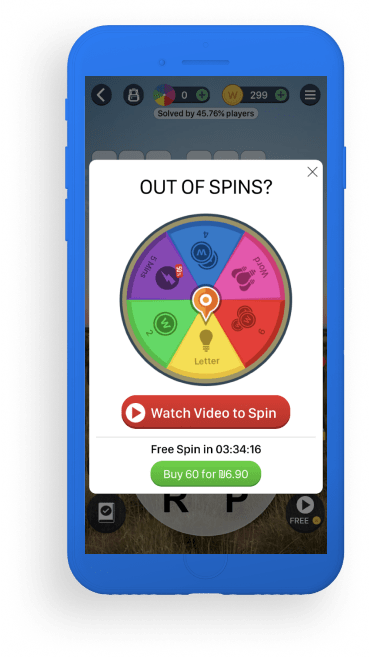
Puzzle games continue to be a dominant genre in the mobile gaming sphere - and using placements like these only improves the puzzle game experience and keeps the genre booming. By understanding your players’ goals and motivations, and using ad placements to enrich and extend their playtime, you can boost their experience and, as a result, your revenue.

